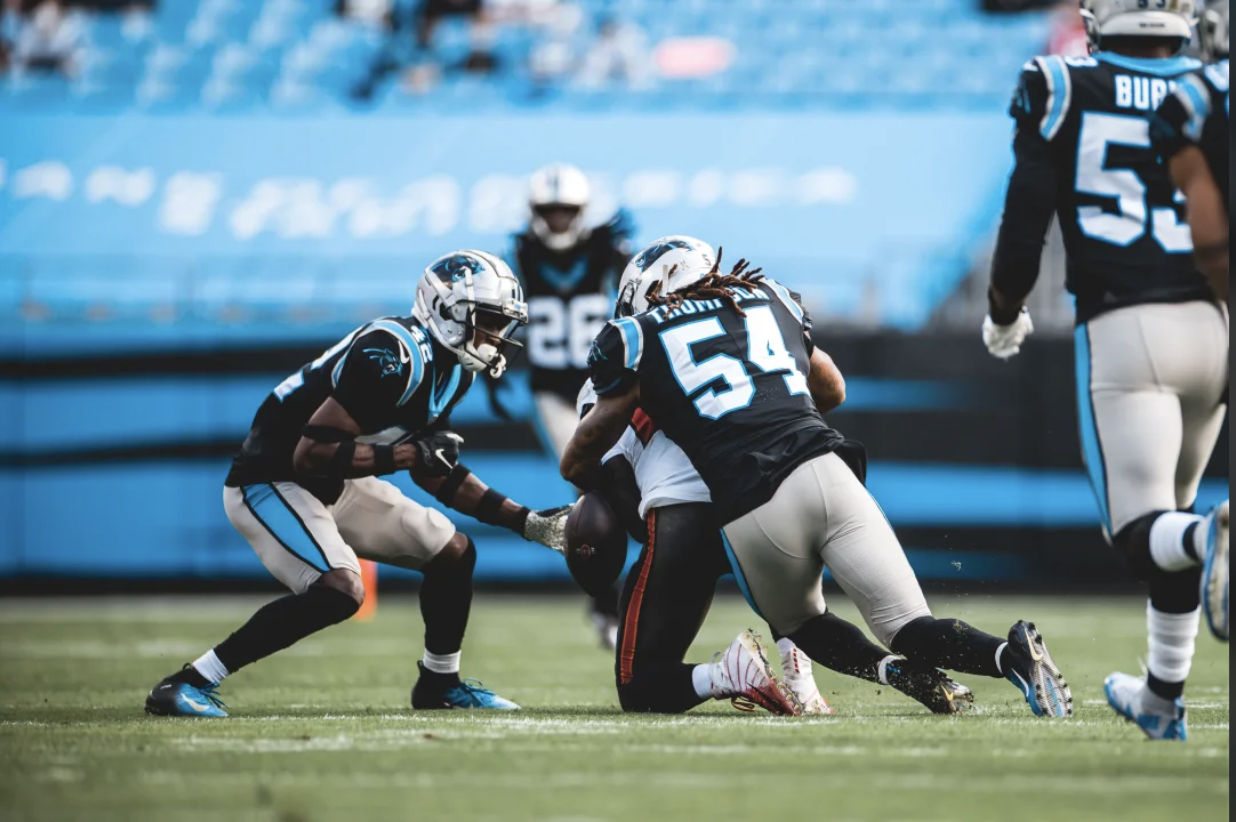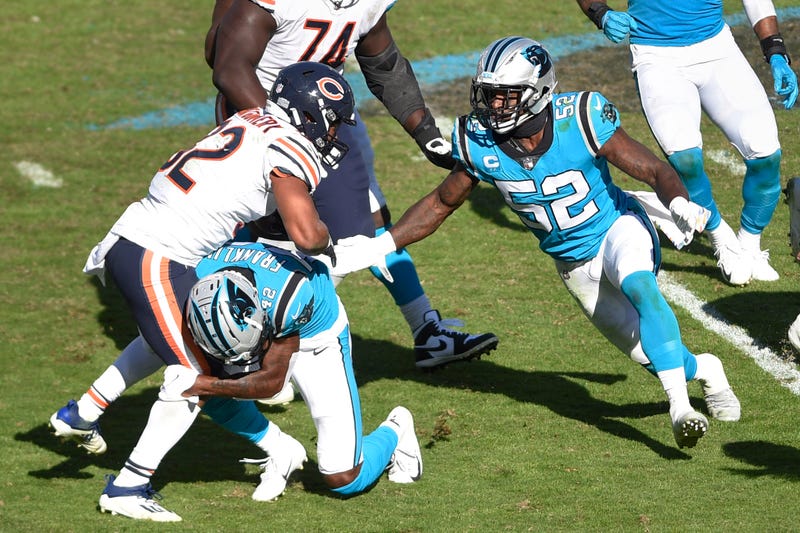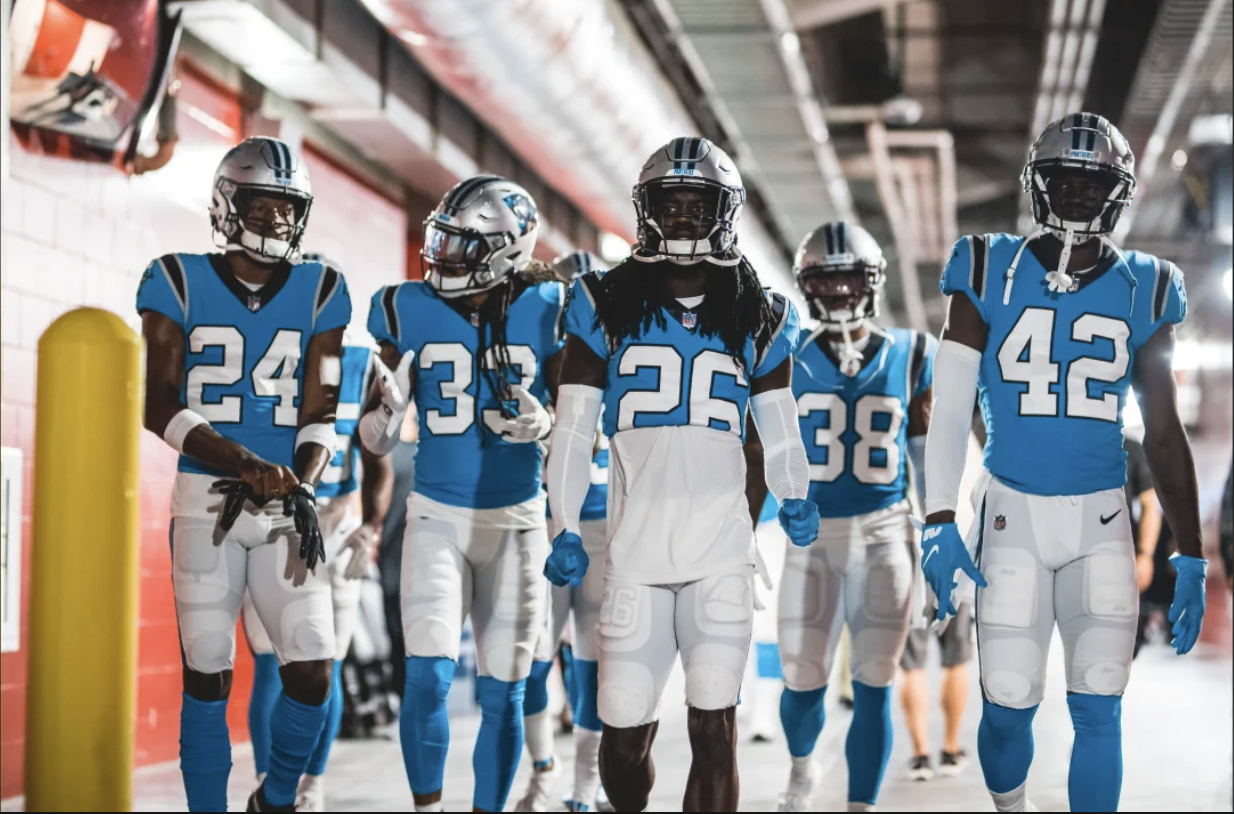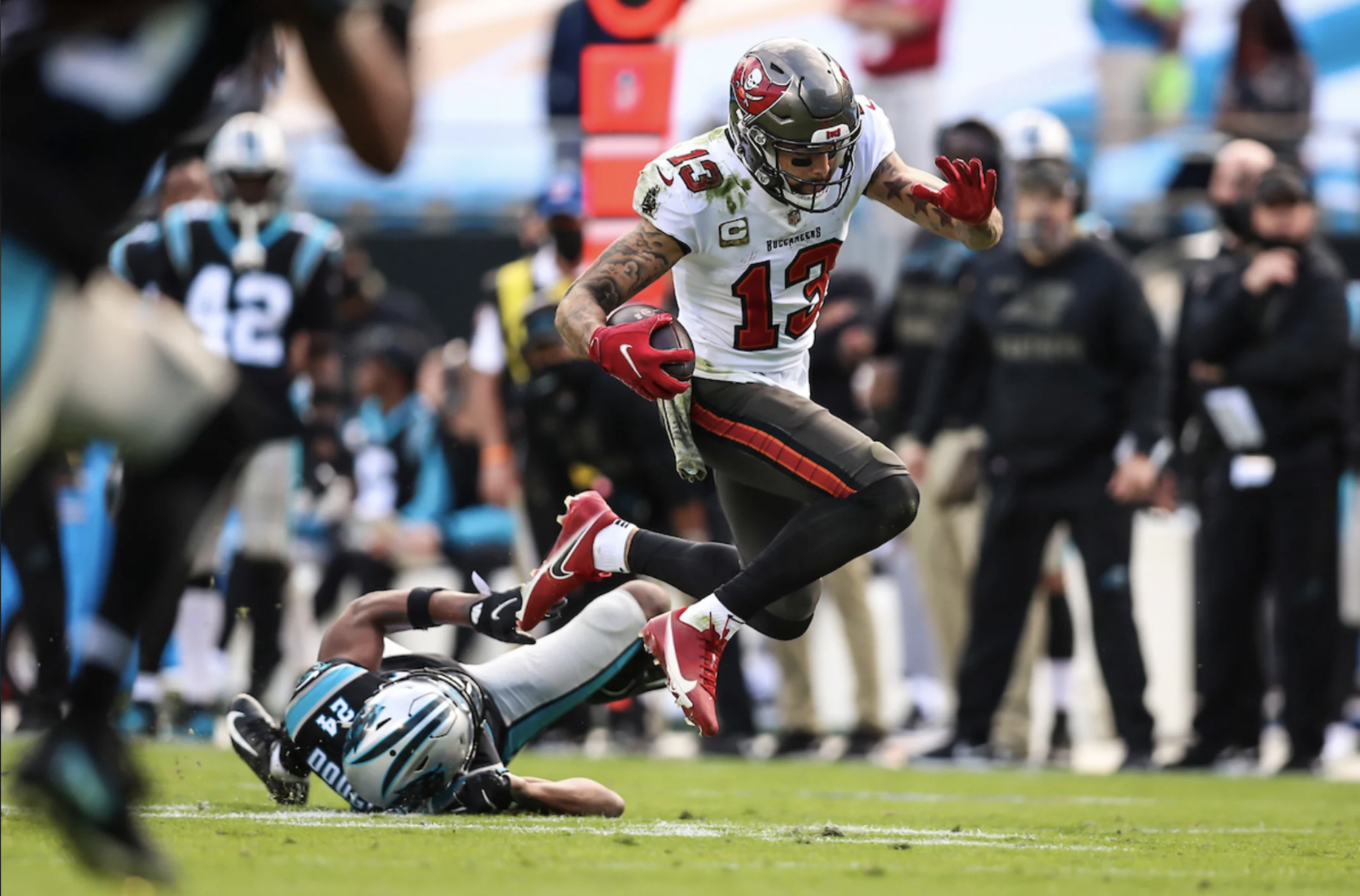Through the first half of the season, the Panthers’ defense massively outperformed expectations under defensive coordinator Phil Snow.
Having been expected to be more porous than a sieve that somebody has put their foot through, they were able to limit opposing offenses to not just keep things respectable, but to put the offense in position to win games down the stretch – more games than they ended up winning.
While they weren’t able to force a huge number of turnovers and ended up forcing opponents to consistently settle for field goals rather than piling up three-and-outs, they were able to hold opponents to a respectable 24.1 points-per-game, and if you just look at Weeks 3 through 8 that figure drops to 21.3 points-per-game. That number would put them in the top ten of all NFL defenses if it had lasted all season.
They did all this despite being consistently short-handed due to injury. So how then, with their missing defensive players mostly back this past Sunday against Tampa Bay, did they get pushed aside like they weren’t there en route to conceding a season-worst 46 point despite only turning the ball over once?

Photo Credit: Brandon Todd/Carolina Panthers
The simple answer to this is that the Panthers have changed what they are doing in terms of coverage, as after having played an awful lot of zone coverage through the first half of the season, they have moved to play a lot more man coverage.
While the ‘soft zone’ that was picked apart by Tom Brady has gotten attention on social media, the Panthers actually played a fair amount of man, especially in third-and-short situations.
“We’re just trying to find ways to get off the field on third down,” Matt Rhule said about the switch to more man coverage. “We sat in zone a little bit more early in the year [and] really, since the Arizona game, we haven’t gotten off the field in third down….we’ve been trying to play more and more man to get off the field. It’s led to the same result – we haven’t done any better – but we have done that just sort of as a way to try to resolve [third down issues].”
Whatever they’ve tried hasn’t worked – according to Sharp Football Stats, on third downs of less than seven yards, the Panthers are allowing a successful pass play on a staggering 70% of attempts, by far the worst in the league. The Bucs converted 10-of-16 third down attempts, including 8-of-12 that were seven yards or less.
The Panthers are allowing opponents to convert on over 55% of their third-down attempts, which would be an NFL record.
“Eight man drop, we’ve played zone, we’ve done all of those different things — you guys have asked, ‘why don’t we have more sacks’ and we’ve just tried to utilize different things, so I think…we’ve tried to evolve.”
While that might prompt the simple proposal of – why don’t they just move back to playing a lot more zone? – it’s worth considering why teams chose to play the coverage they do.
Generally, zone coverage can work to protect a secondary that doesn’t have the skillset to consistently match up with opponents in man coverage and maximizes opportunities for turnovers and sacks – that’s done by forcing quarterbacks to hold the ball and potentially rush decisions due to the pressure up front. The 2013 Panthers are a great example of how this can work – they were able to put together an elite defense despite having Josh Thomas, Melvin White and Drayton Florence as their outside corners as they could consistently get quick pressure without having to blitz.
Conversely, teams tend to play man coverage when their strength is their secondary and they can take away receivers for longer periods of time giving their front time to get home. As zone coverages make it very hard to sustain coverage for long periods of time, man coverages give a defense the best chance of preventing consistent completions – specifically on third-and-short. However, on the downside, they require multiple high-quality corners who both have the ability to play man-coverage to a high level but also to match up with a range of different receiver types.
One of those players has been fourth-round pick Troy Pride, Jr, who is likely to start this week.
“As the year’s gone on, we’ve faced some really good players and some really good quarterbacks – and we’ve been playing more and more man each and every week, so he’s got the microscope certainly on him,” said Rhule. “He doesn’t give up big plays, he doesn’t give up explosive shots.”

Photo Credit: Bob Donnan/USA TODAY Sports
The other issue the Panthers have is that while Brian Burns has emerged as an elite pass rusher on the edge, their interior pass rush has really struggled and while Yetur Gross-Matos and Marquis Haynes have flashed, neither have got consistent pressure.
With KK Short out, the Panthers really don’t have a natural 3-tech left on the roster and while Efe Obada has done a decent job as the Panthers’ primary interior rusher, he is ultimately a rotation defensive end playing out of position. All in all, the Panthers’ defensive linemen have combined for 41 QB hits through 10 games (4.1 per game), they had 88 last season (5.5 per game) and 86 in the 2013 season (5.4 per game). Only six teams have lower pressure rates than the Panthers this season, and if you are going to play zone coverage on a consistent basis, you need to do better than that.
“Everything works off of each other,” explained Rhule. “When you have good outside pass rushers, they chip you and you need your inside guys to win….we, right now inside, are making the quarterback step and slide, but we’re not getting the final production that we need. Especially [not] against a guy like Brady.”
This is something that the Panthers have clearly been aware of as the season has gone on; however, while playing more man coverage might help the pass rush get home in principle, this plan has since run into a second, possibly more severe problem: the Panthers do not have the corners to consistently match up in man coverage with the better receiver groups in the NFL.
In the short term, the Panthers don’t really have a good solution, this is very much a least-bad alternative situation. There might be games where they match up better than others in man coverage – and this isn’t an approach they should dismiss completely and Sunday against the Lions might make for a good example – but the evidence so far suggests that what the Panthers have been able to improve in terms of helping their pass rush has been outmatched by the pressure this has put on the secondary – especially if Donte Jackson is going to continue to be out.
Going back to zone coverage is going to make it hard for them to force many three-and-outs, but it might prevent them from getting 40 put on them every week.

Photo Credit: Brandon Todd/Carolina Panthers
Of course, like with a lot of things this season, an eye also needs to be kept on the long term solution. Should the Panthers completely overhaul their secondary this offseason to allow them to play more man coverage or should they invest further in their defensive line and hope that KK Short can stay healthy next season?
The answer in what they might do this offseason can be seen in how they approached last offseason.
The Panthers can’t draft seven defensive players every year – so the players they drafted last year have to form a substantial part of their defense going forward. While Jeremy Chinn has already taken that step, the fact that the Panthers spent their first two picks on defensive linemen should be an indication that the strength of their defense is once again going to be built up front, and while they do need to continue to invest across the defense, continuing to build upon what they have already started seems like an eminently more sensible suggestion.
The Panthers’ defense is not in a position to go toe-to-toe with the elite offenses around the NFL, and that is something that playing zone and keeping things in front of them can at least disguise a fair amount and give them a chance to limit opponents to field goals. They have a lot of decisions to make this offseason in terms of who they bring back and who they don’t – if they are going to be a zone defense going forward, at least for the most part, they need to evaluate their players in the defense they plan to play, rather than trying to fudge things to get through each week in a season that is about development more than results.
(Top Photo Via Tampa Bay Buccaneers)



